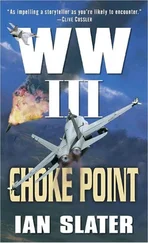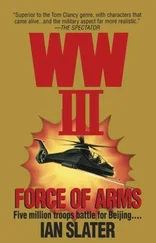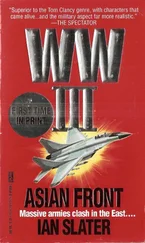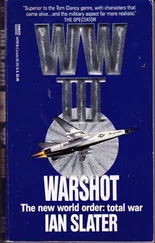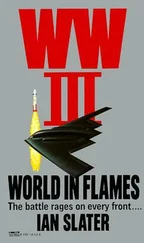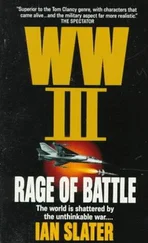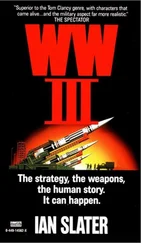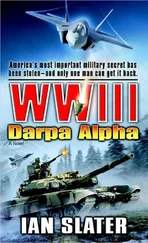The black basalt pinnacles of Ullŭng Island appeared momentarily to be sliding uphill, an optical illusion caused by the nine men’s alpha chutes inclining slightly against the horizontal during a short, sharp buffeting by updrafts. Beyond the island, Freeman and his men now saw the whitish gray slivers of the McCain ’s 7th Fleet battle group, the carrier battle group out of COMPAC’s — Commander Pacific’s — base in Yokosuka, Japan. McCain was steaming, as expected, in the middle of her protective screen. Not surprisingly, the two attack subs, presumably fore and aft, were nowhere in sight.
Within McCain ’s screen of twelve vessels, which included four destroyers, two frigates, two guided-missile Aegis cruisers, a replenishment vessel, and the two nuclear attack submarines, was the Wasp-class helo carrier transport USS Yorktown , carrying 2,100 Marines of a Marine Expeditionary Unit under the command of Colonel Jack Tibbet. Marines high and low were making bets as to whether the nine parachutists would be able to land on the “boat,” as the big aircraft carrier McCain was known to her six thousand personnel, the other ships’ sole reason for being in the battle group to protect Captain Crowley’s flat-top.
“What d’you think, sir?” Executive Officer John Cuso asked Crowley, who, as captain of the McCain , was also admiral of the fleet.
The diminutive Crowley, who’d stepped down from the bridge and made his way along the walkway known as “Vultures’ Row,” from where he had a high and open-aired view down onto the four and a half acres of flight deck, held Cuso’s question in abeyance. He watched his orange-vested swimmers drop like black stones from McCain’s CM-53E, the Super Sea Stallion’s rotors’ slap clearly audible for a change, now that the carrier’s air arm’s ops had been suspended, its eighty-two aircraft chained down to allow as much space as possible for the helicopter’s “triple P”—pick up personnel and pallet — retrieval crew to operate. This was a rare event in normal times, but less so in the world war against terrorism wherein U.S. supplies and combatants had to have RO/RO — roll-on, roll-off — capability across ever-shifting fronts, some of which existed one day and were gone the next.
“Depends on how much jump time they’ve racked up,” Crowley finally answered.
Cuso, the black XO, executive officer, recalled the only combat jump he’d made in his life, an “emergency eject” from his shot-up Tomcat. It was an event so terrifying, so fast, Cuso sent hurtling out of the fighter with such force, that initially he’d felt no pain. That came later, together with the naval medical board informing him that the injuries he’d sustained in his lower back and legs would not only end his career as an elite naval aviator, the crème de la crème of combat pilots, but would even deny him the opportunity to be a “bus” driver in commercial aviation.
Cuso shaded his eyes against the sparkling sea. “You know who they are exactly?” he asked Crowley.
“Don’t be silly, Commander. We aren’t privy to that kind of SOCOM Washbasin information. We just row the boat, do as we’re told.”
John Cuso smiled wryly at Crowley’s disdain for Special Operations Command and Washington, D.C.
“Used to be a time,” Crowley continued, “when we were given more than visiting Special Forces’ blood type, rank, and serial number. But now—” He exhaled wearily while watching the nine descending dots scattered high above the battle group. “—we’re damned lucky to be told where they’re going.”
The parachutists continued performing what appeared to be random gyrations but which, Crowley knew, were highly individually choreographed maneuvers designed to override and nullify the myriad unseen air currents that formed an invisible tangle of random vectors above the battle group. The sky above as much as the sea below him, the captain knew, was far from a uniform medium, consisting of phantom wind shears, crosswinds, and vicious gusts of air constantly in motion, so that the whole pattern of the invisible sky was ever changing as dramatically as the ceaseless reconfiguration of clouds.
Even before Douglas Freeman had reached the McCain ’s fantail, stepping down onto it with all the grace of Baryishnikov, what seconds before had been a distant line of towering ice-cream-white on the horizon had already begun flattening out into what McCain ’s weather office called L3s, shorthand for nascent and threatening thunderheads.
Aussie Lewis, Choir Williams, and Bone Brady touched down within seconds of one another on the port side of the flight deck directly across from the carrier’s six-story-high island. Brady and Choir quickly turned to face their chutes, simultaneously running toward the wind-inflated nylon panels, quickly trying to reel in the chutes’ lines. In both their chutes, the air-filled panels collapsed obediently onto the hard deck. Aussie’s chute, however, broadsided by a sudden and powerful crosswind, one of those invisible demons of dog aviators and flight-deck crews alike, was blown back port aft, the small deck crew assigned to help running after him. Momentarily losing his footing, he tripped, being dragged unceremoniously across the tracks of catapults 3 and 4. In a second he was back on his feet, but unable to stop, glimpsing the black safety net that fringed the flight deck rushing toward him. He hit his emergency release buckle, but simultaneously fresh gusts reinflated his chute and he saw the safety netting flash by. A second later, his chute gone, he plummeted into the sea over fifty feet below, his swearing drowned unheard as he disappeared beneath the waves, his head bobbing up moments later in the carrier’s dangerously churning wake.
The Super Stallion, which had assumed its normal position off McCain ’s aft quarter after having lowered the team’s big load onto the flight deck’s number 1 elevator, now turned sharply in a U-turn, hard astarboard, its rescue swimmer already at the helicopter’s door.
The helo’s downdrafts momentarily flattened the carrier’s wake into a foam-edged blue pool, Aussie’s normally brown hair now a black slick, his face strained as he attempted to look up through a maelstrom of wind and water at the descending orange blur that was the rescue harness. He hadn’t seen anyone drop from the helo, so that when the swimmer grabbed his arm, the Australian-born Lewis instantly thought “Shark!” and struck out with such violence that he stunned the swimmer, who in turn slapped Lewis across the face, yelling, “Calm down! I’m here to—”
“Oh, shit. Sorry, mate, geez—”
“Calm down!”
“Yeah, yeah, right. Okay.”
“He hit him!” said John Cuso, watching through his binoculars.
“Who hit who?” growled Crowley, watching the last of the nine-man team, CPO Tavos, touch down without incident.
“That Special Forces guy in the drink,” said Cuso. “He just clobbered our swimmer.”
“Panic?” said Crowley. “Doesn’t seem like Special Forces — more like a ninny.”
The deck crew gave the chopper’s rescue team, and presumably Aussie, a celebratory round of applause, the subdued sound of their gloves further muffled by the Sea Stallion’s roar, its downwash throwing up tiny pieces of grit from the flight deck as high up as Vultures’ Row, a piece stinging Crowley on the cheek.
“Dammit,” grumped the admiral. As captain of the McCain he was almost as detail-obsessed about his job as was Douglas Freeman, who as yet Crowley did not know was the leader of this Special Forces drop-in. Crowley immediately ordered his XO to implement more than the normal number of pre-flight “FOD”—foreign debris — walkdowns, in which a long line of deck personnel, shoulder to shoulder, would move slowly down the fourteen-degree-angled flight deck, peering down at the black deck with the concentration of a hobo looking for cigarette butts and coins. Debris as small as a dime could play havoc with a jet’s finely tuned engines and so delay an entire launch for a squadron or the 24-7 four-fighter CAP — combat air patrol. And a CAP must always be aloft, its pilots acting not only as over-the-horizon lookouts, but, should it become necessary, as the battle group’s airborne “bouncers,” as McCain ’s master chief had called them.
Читать дальше

